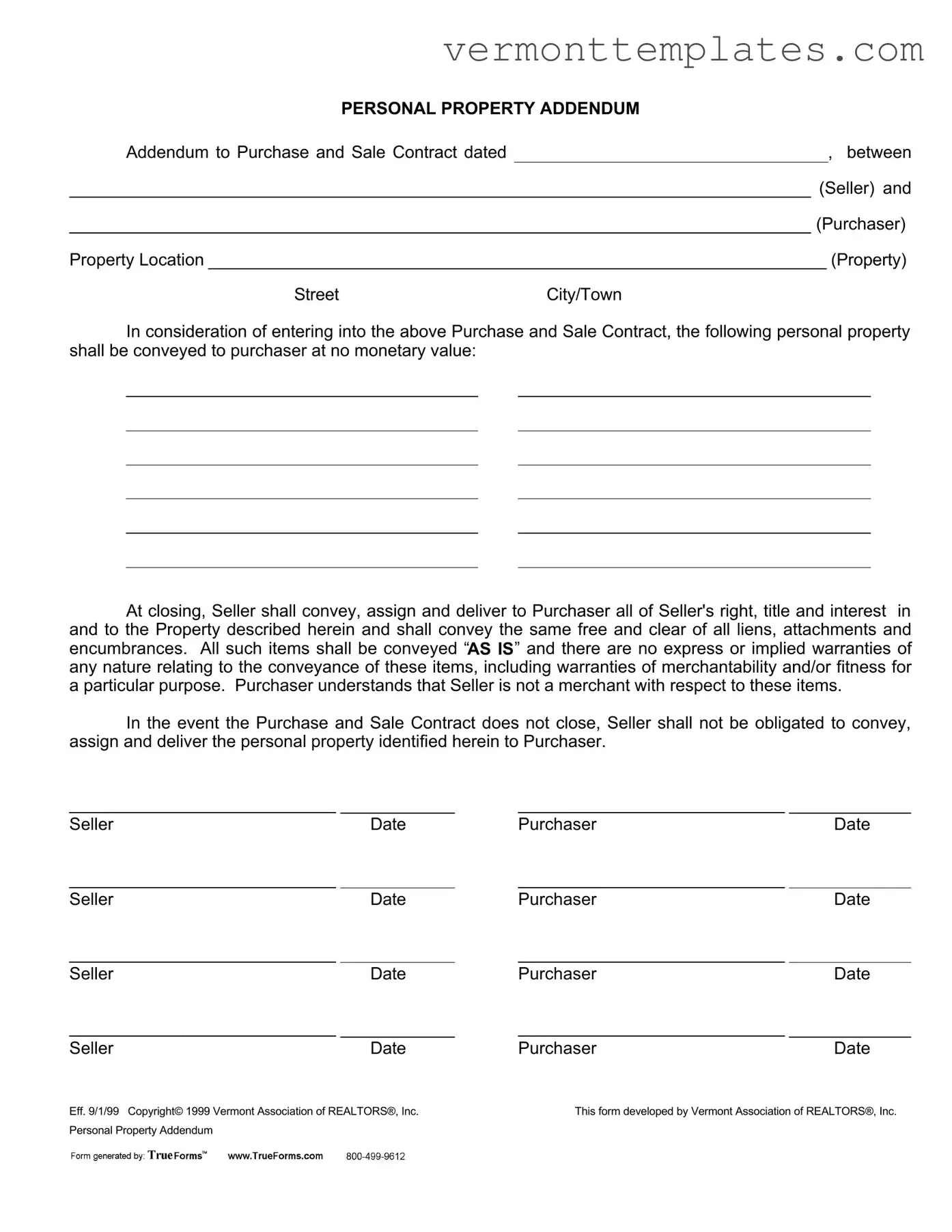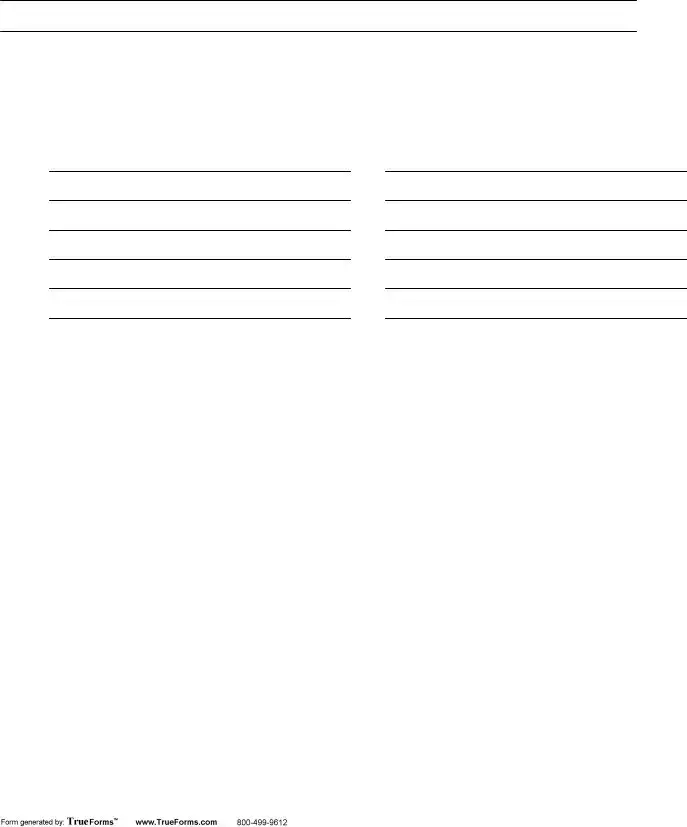The Personal Property Addendum is closely related to the Real Estate Purchase Agreement. Both documents serve to outline the terms of a real estate transaction, but the Purchase Agreement primarily focuses on the property itself, while the Addendum specifies additional personal property included in the sale. This ensures that both the buyer and seller have a clear understanding of what is being transferred, minimizing potential disputes over items that may not have been explicitly mentioned in the main contract.
Another document similar to the Purchase Addendum is the Bill of Sale. This document is often used to transfer ownership of personal property separately from real estate transactions. While the Purchase Addendum includes personal property as part of the real estate deal, a Bill of Sale serves as a standalone agreement that details the items being sold, their condition, and the terms of the sale. This can be particularly useful when high-value personal property is involved.
In the context of the hiring process, an Employment Application PDF form plays a vital role in presenting a candidate's qualifications systematically and efficiently. This form, which consolidates personal details, work experience, and competencies, can be seamlessly integrated into platforms such as smarttemplates.net, where interested job seekers can easily access fillable versions to enhance their applications and streamline the evaluation process.
The Lease Addendum also shares similarities with the Purchase Addendum. In rental agreements, a Lease Addendum can specify additional terms or conditions that apply to the lease. Just as the Purchase Addendum clarifies what personal property is included in a sale, a Lease Addendum can clarify what items, like appliances or furniture, are part of the rental agreement. This helps prevent misunderstandings between landlords and tenants.
Another relevant document is the Seller's Disclosure Statement. This statement is typically provided by the seller to inform the buyer about the condition of the property and any known issues. While the Purchase Addendum focuses on personal property, the Seller's Disclosure Statement ensures that the buyer is aware of any potential problems with the property itself, promoting transparency in the transaction.
The Home Inspection Addendum is also akin to the Purchase Addendum. This document allows buyers to specify that a home inspection must be completed before the sale is finalized. If issues are discovered during the inspection, the buyer may negotiate repairs or credits. Like the Purchase Addendum, it adds clarity to the transaction by addressing specific concerns that could affect the buyer's decision.
The Contingency Addendum is another document that parallels the Purchase Addendum. This type of addendum outlines specific conditions that must be met for the sale to proceed. For example, a buyer might include a contingency for obtaining financing or selling their current home. Similarly, the Purchase Addendum specifies conditions regarding the transfer of personal property, ensuring that both parties are on the same page.
The Title Addendum can also be compared to the Purchase Addendum. This document addresses issues related to the title of the property, such as liens or encumbrances. While the Purchase Addendum deals with personal property, the Title Addendum ensures that the property itself can be transferred free of legal issues. Both documents aim to protect the interests of the buyer and seller in their respective areas.
Finally, the Closing Statement is a crucial document that summarizes the financial aspects of the real estate transaction. While the Purchase Addendum focuses on personal property, the Closing Statement provides a comprehensive overview of all costs, fees, and credits associated with the sale. Both documents are essential for ensuring that all parties understand their obligations and rights as the transaction nears completion.

